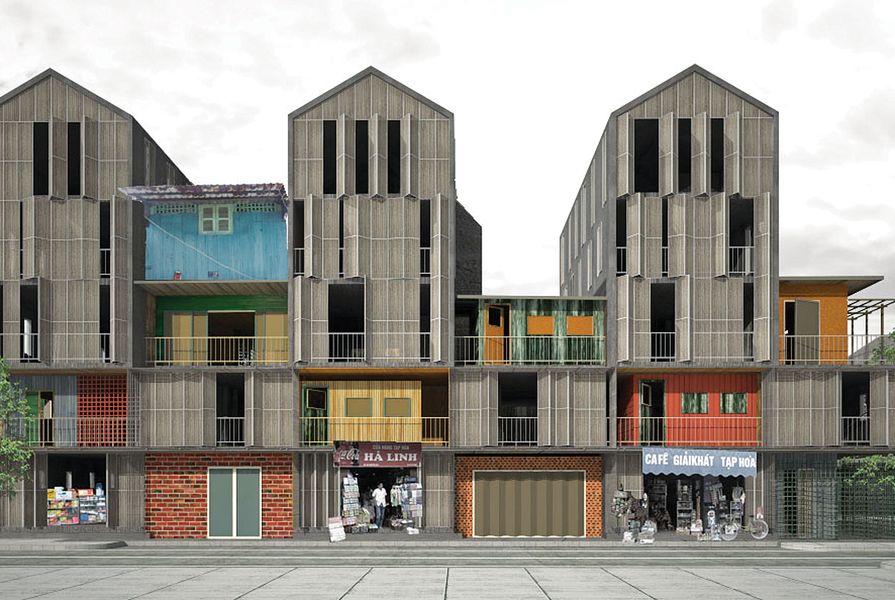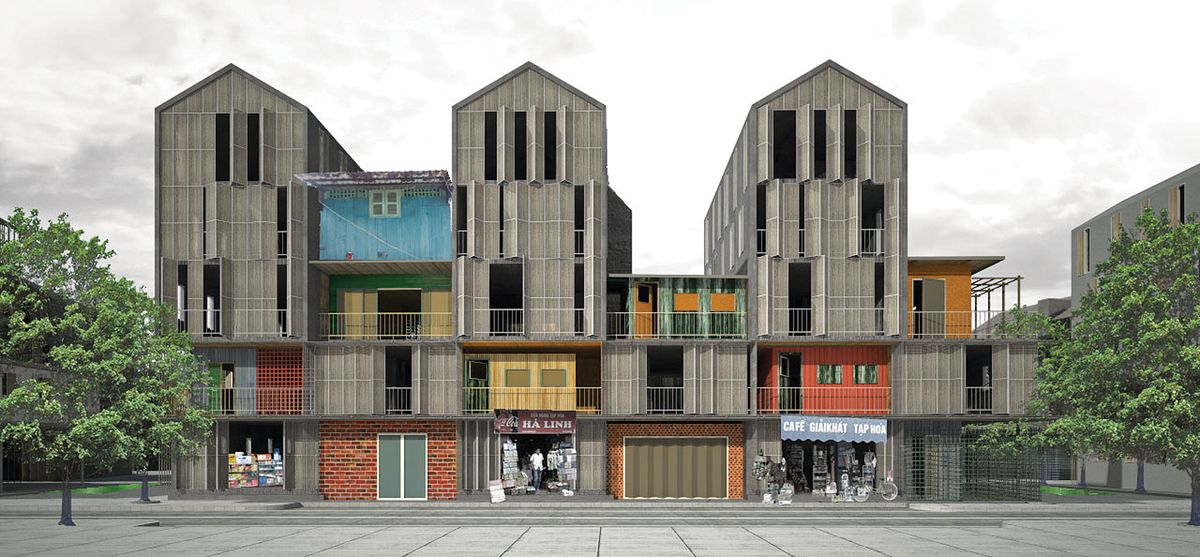The winner of the 2011 AA Prize for Unbuilt Work, Ton Vu, explores the topic of informal urbanism, a pressing matter given that one-sixth of the world’s population currently lives in informal settlements, with this figure growing. In Vu’s project, Sai Gon Informal, the reality is that 80 percent of Ho Chi Minh City’s economy is in fact informal and its neighbourhoods are cleared as a by-product of modernization.
Ton Vu displays a deep understanding of and engagement with the city’s culture; this is reflected in his sophisticated refraction and densification of the Saigon narrow-house typology to rehouse the informal settlers.
Ton Vu does not only highlight and employ bottom-up tactics in making a city, but also employs formal architectural strategies, which are shown in the integration of formal and informal program. Imbued within the architecture, the materialization and formalization of these economies in terms of ownership is not seen as an elegiac loss of culture, but instead in terms of empowerment. And with this, Ton Vu shows what architecture can do to empower the underdog, from the scale of the city to the street corner.
Entries to the 2021 AA Prize for Unbuilt Work can be made via its website until 28 August 2020.
Winners will be announced in the January/February 2021 issue of Architecture Australia and on ArchitectureAU.com.


















